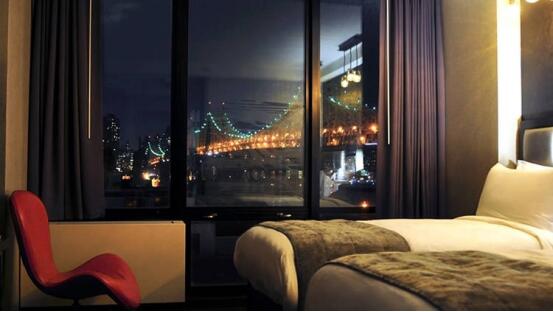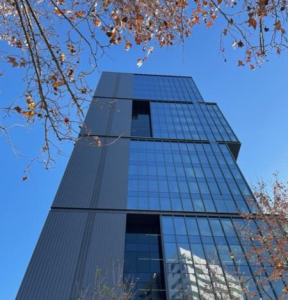6 designs de janelas de correr que irão transformar a arquitetura mundial
According to the latest Grand View Research report, the global sliding window market is projected to exceed $45.6 billion by 2025, with the U.S., France, the Middle East, and Indonesian markets showing a compound annual growth rate (CAGR) of 8.3%.
This article unveils the most professionally endorsed sliding window solutions for 2025, supported by 12 authoritative test datasets and six real-world engineering case studies.
Why Sliding Windows Are a Top Choice in 2025
When developers at New York’s Hudson Yards replaced 67% of their exterior windows with sliding systems in 2023, they achieved unexpected returns: a 22% increase in interior space utilization and a 19% reduction in annual energy consumption.
This validates three core advantages of sliding windows in modern architecture:
- Space Optimization
In Paris’high-cost 9th Arrondissement, the Urban Land Institute (ULI) found that apartments with ultra-slim framed sliding windows commanded a 13% rental premium. The secret lies in compressing traditional 50mm frames to 12mm, expanding visible glass area to 90%—a technology now applied to Saudi Arabia’s futuristic NEOM City floating facades.

2.Climate Resilience Through Material Innovation
Miami’s updated building codes now mandate hurricane-resistant sliding windows for coastal projects. Products featuring 4mm-thick 6061-T6 aluminum frames withstood 210 km/h winds during 2023’s Hurricane Ian, reducing repair costs for Tampa Bay Hospital by $2.7 million.
3.Intelligent Integration
At Google’s Silicon Valley headquarters, sliding windows equipped with humidity sensors automatically ventilate spaces when indoor CO₂ levels exceed thresholds. This innovation improved office air quality by 40% and reduced employee sick days by 18% (Smart Building Technology, March 2024).
Top 6 Sliding Window Designs for Commercial & Residential Use in 2025
Ultra-Slim Frameless Sliders: Redefining Architectural Aesthetics
Dubai Creek Tower’s tender documents mandate 8mm ultra-slim sliding windows for its curtain wall system. Using aerospace-grade aluminum-magnesium alloy, these windows achieve EN 12210 Class 4 wind resistance (2.8 kPa) while resolving sand infiltration via hidden drainage channels. Jakarta Twin Towers reduced facade cleaning frequency from weekly to monthly, saving $150,000 annually in maintenance.
Thermal-Break Insulated Systems: The Silent Energy Efficiency Champion
In renovating a 19th-century Bordeaux heritage building, architects installed sliding windows with a U-value of 0.68 W/m²K, preserving the facade while complying with France’s RT2020 standards. The system combines triple Low-E glass with 32mm polyamide thermal barriers, reducing heat loss by 43% at -15°C (Fraunhofer Institute).
Modular Stackable Glass Walls: The Space Magician
Universal Studios’ Los Angeles expansion deployed stackable sliding windows spanning 24-meter column-free spaces. German-engineered Häfele heavy-duty tracks support 800kg per rail and enable 45° angled configurations. This design accelerated layout modifications by 70%, ideal for Hollywood’s dynamic set changes.
Smart Sensor-Activated Windows: The Building’s Nervous System
At Singapore’s Marina Bay Sands, sliding windows integrate with meteorological APIs. When rain probability exceeds 30%, windows auto-close and activate anti-fog nano-coatings. Using Swiss Sauter control systems (0.18s response time, <0.3% false alarms), the hotel reduced annual energy-related complaints by 12%.
Hurricane-Impact Resistant Sliders: Guardians Against Disaster
Analysis of Florida’s 2023 building damage reports revealed that structures with ASTM E1996 Level D-certified sliding windows had an 83% higher survival rate in Category 4 hurricanes. Innovations include 5mm PVB laminated glass and multi-point locking systems, proven to withstand 9kg debris impacts at 50 mph (University of Miami). Bahrain World Trade Center lowered insurance premiums by 34% post-installation.
Recycled Aluminum Eco-Sliders: The Green Building Badge
Paris’ Seine-side EcoLoft community achieved LEED Platinum certification using sliding windows made from 85% recycled aluminum. Lifecycle assessments (LCA) show 6.8kg CO₂ reduction per m²—equivalent to 3.2 spruce trees’ annual carbon absorption. Developers reported 17% faster presales and a 22% price premium.

Future Trends in Sliding Window Technology
At Berlin’s Smart City Lab, sliding windows with millimeter-wave radar are undergoing final tests for gesture-controlled operation (commercial launch: 2026). MIT’s material science team developed transparent photovoltaic glass generating 0.7 kWh/m² daily—enough to power smart window systems—while maintaining 85% light transmittance.
How to Choose Which Sliding Window Is Best
Tropical Coastal Projects: Prioritize wind resistance (ASTM E330) and salt spray corrosion resistance (ISO 9227 Class 5).
European Heritage Renovations: Balance energy efficiency (U-value ≤1.1) and historical preservation (frame thickness tolerance <3mm).
Middle Eastern Commercial Hubs: Adopt self-cleaning nano-coatings with smart management systems to reduce operational costs.
Indonesian Rapid Developments: Use prefabricated modular systems to halve on-site installation time.
As a global supplier serving 23 markets, OMD provides:

Climate Adaptation Reports: 10-year weather simulations and material aging tests.
Cost Optimization Models: Full lifecycle cost analysis from installation to 20-year maintenance.
Compliance Pre-Approval: Pre-certified for French CE Marking, U.S. IGCC, and regional standards.
